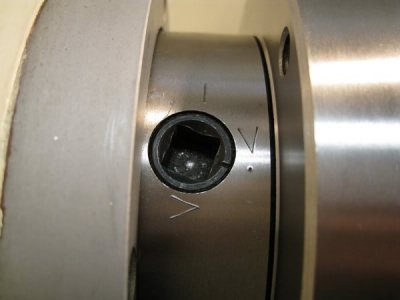- Joined
- Feb 7, 2018
- Messages
- 160
Hello,
I just finished a disassembly and cleaning of the 3 Jaw chuck on the new to me Enco lathe I purchased recently. The spindle is a D1-4 and doesn't have any makings on the spindle to indicate the tightening range on the cams. Looking at a grizzly manual for a comparable lathe it seems that the cam should rotate between 90 and 180 degrees to be in the tightened range? I've got two cams stopping at ~110 degrees of rotation and the third at ~160 degrees when tightening clockwise. The face of the spindle and the back of the chuck look good and tight, and I've got very low run out on a 1" ground test rod so I believe everything is aligned properly. My question is does the tightening of the cams seem correct degree wise? This is my first experience removing/ installing a D1 style chuck.
Thanks,
Nick
I just finished a disassembly and cleaning of the 3 Jaw chuck on the new to me Enco lathe I purchased recently. The spindle is a D1-4 and doesn't have any makings on the spindle to indicate the tightening range on the cams. Looking at a grizzly manual for a comparable lathe it seems that the cam should rotate between 90 and 180 degrees to be in the tightened range? I've got two cams stopping at ~110 degrees of rotation and the third at ~160 degrees when tightening clockwise. The face of the spindle and the back of the chuck look good and tight, and I've got very low run out on a 1" ground test rod so I believe everything is aligned properly. My question is does the tightening of the cams seem correct degree wise? This is my first experience removing/ installing a D1 style chuck.
Thanks,
Nick



 Well, I DID say in my post earlier this morning that THIS IS A COMMON PROBLEM! If you have a D1 series spindle on your lathe, you should take a very close look at how the chuck(s) fit the spindle and if they are registering on BOTH the spindle taper AND on the spindle face.
Well, I DID say in my post earlier this morning that THIS IS A COMMON PROBLEM! If you have a D1 series spindle on your lathe, you should take a very close look at how the chuck(s) fit the spindle and if they are registering on BOTH the spindle taper AND on the spindle face.